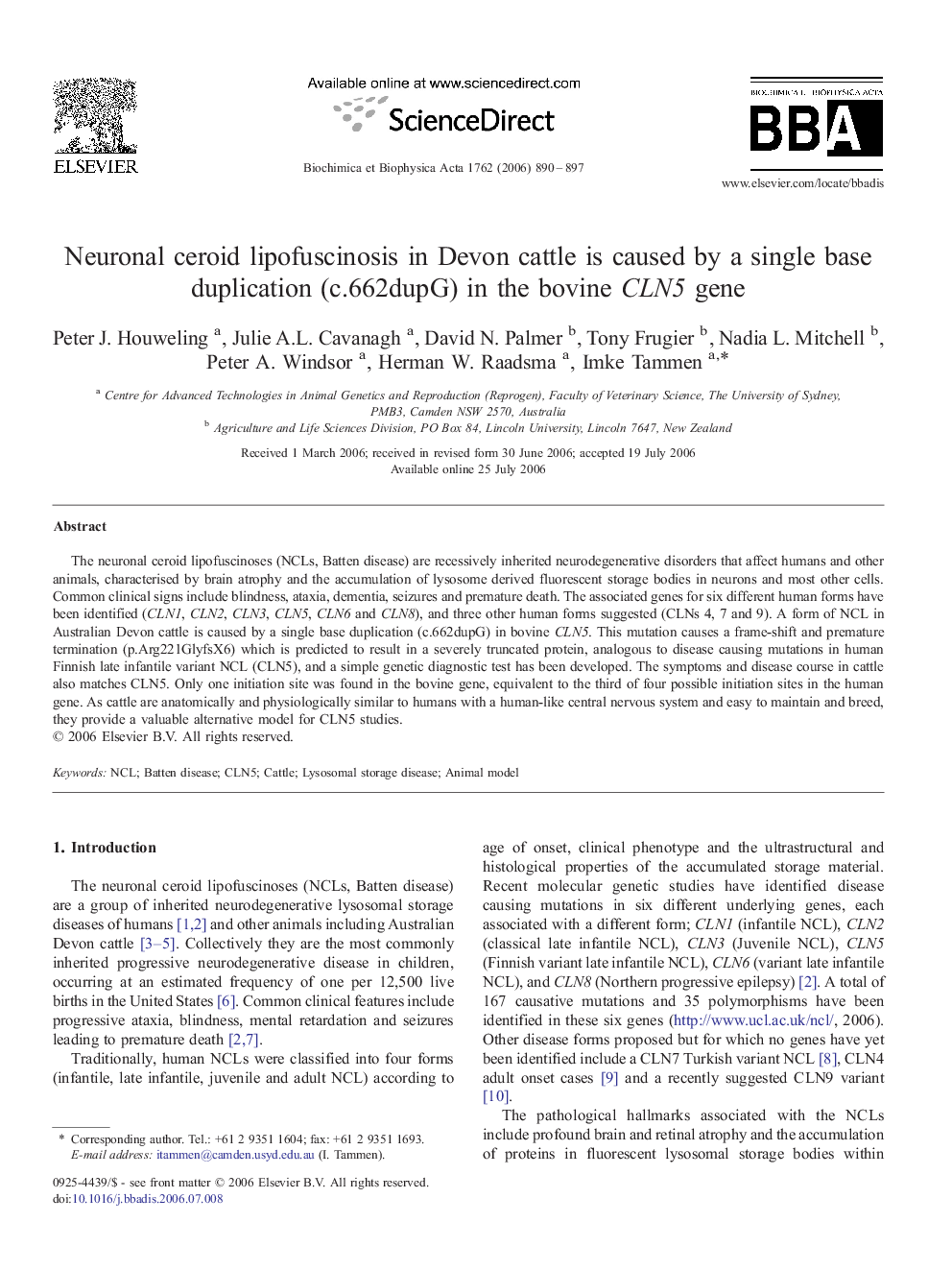| Article ID | Journal | Published Year | Pages | File Type |
|---|---|---|---|---|
| 1905947 | Biochimica et Biophysica Acta (BBA) - Molecular Basis of Disease | 2006 | 8 Pages |
The neuronal ceroid lipofuscinoses (NCLs, Batten disease) are recessively inherited neurodegenerative disorders that affect humans and other animals, characterised by brain atrophy and the accumulation of lysosome derived fluorescent storage bodies in neurons and most other cells. Common clinical signs include blindness, ataxia, dementia, seizures and premature death. The associated genes for six different human forms have been identified (CLN1, CLN2, CLN3, CLN5, CLN6 and CLN8), and three other human forms suggested (CLNs 4, 7 and 9). A form of NCL in Australian Devon cattle is caused by a single base duplication (c.662dupG) in bovine CLN5. This mutation causes a frame-shift and premature termination (p.Arg221GlyfsX6) which is predicted to result in a severely truncated protein, analogous to disease causing mutations in human Finnish late infantile variant NCL (CLN5), and a simple genetic diagnostic test has been developed. The symptoms and disease course in cattle also matches CLN5. Only one initiation site was found in the bovine gene, equivalent to the third of four possible initiation sites in the human gene. As cattle are anatomically and physiologically similar to humans with a human-like central nervous system and easy to maintain and breed, they provide a valuable alternative model for CLN5 studies.
